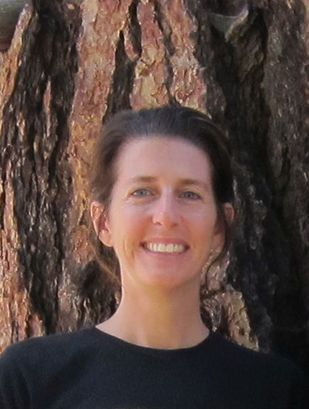|
By MONICA BOND Special to the Sacramento Bee September 26, 2015 End destructive practice of logging forests after wildfires
When it comes to wildfire, the U.S. Forest Service has it all wrong. In its just-released plan to chop down trees in nearly 17,000 acres hit by last year’s King fire in the Eldorado National Forest – including logging in 28 occupied spotted owl territories – the agency trots out the same tired falsehoods. First, the Forest Service claims burned areas must be logged and replanted to “restore” the forest. In truth, wildfire is natural and necessary in the Sierra Nevada, even fires that burn very hot over huge areas, and human interference after fires is harmful rather than helpful. For thousands of years, big fires have burned in the Sierra Nevada and are as ecologically critical for native plants and animals as rain and snow. And the trees have always grown back on their own. But before the trees grow back, the burned forests erupt with life. Black-backed woodpeckers thrive in the most charred forests, feasting on the superabundance of insects and creating nesting holes in the freshly dead trees. After the woodpeckers, mountain bluebirds and house wrens use the abandoned cavities to raise their own chicks. Deer mice and gophers eat fire-exposed seeds and newly sprouting vegetation. These rodents are food for imperiled California spotted owls, who have been documented hunting in charcoal forests, using dead trees to perch upon and listen for their prey rustling below. Which brings us to falsehood No. 2: that logging will help, not harm, the spotted owl. This has never been true. Heavily burned forests are great hunting grounds for the owl, but studies have proven that post-fire logging causes owls to abandon their territories. This comes as no surprise, since wildfire is natural but people chopping down trees is not. Logging is the real threat to owls. The U.S. Fish and Wildlife Service agrees – recently the agency decided to consider listing the California spotted owl as endangered or threatened under the federal Endangered Species Act, citing thinning and post-fire logging as primary threats to declining populations. Falsehood No. 3: Current fires burn more acres than ever before, so fire suppression and logging after a fire are necessary. In fact, the number of acres burned by wildfires in recent years is not at all unprecedented in ancient or modern history. Studies of charcoal in sediments dating back 8,000 years show vast areas burned in hot fires during droughts, the same as today. According to the National Interagency Coordination Center, 8.2 million acres have burned in U.S. wildfires as of Sept. 1. Yet during the 10-year hot and dry period from the late 1920s to the late 1930s, an average of 30 million acres burned every year. Special interests do not want this information widely publicized. Under the George W. Bush administration, the Forest Service and federal government purged all wildfire-acre-burned statistics from before 1960. These charcoal forests are magical places, thriving with life. It is time to end the destructive practice of logging our precious forests after fire, and celebrate wildfire as natural and renewing. Monica Bond, a wildlife biologist with the Wildlife Nature Institute, is a nationally known scientific expert on spotted owls and fire ecology.
0 Comments
Your comment will be posted after it is approved.
Leave a Reply. |
Science News and Updates From the Field from Wild Nature Institute.
All Photos on This Blog are Available as Frame-worthy Prints to Thank Our Generous Donors.
Email Us for Details of this Offer. Archives
July 2024
|
|
Mailing Address:
Wild Nature Institute PO Box 44 Weaverville, NC 28787 Phone: +1 415 763 0348 Email: [email protected] |
|


 RSS Feed
RSS Feed
